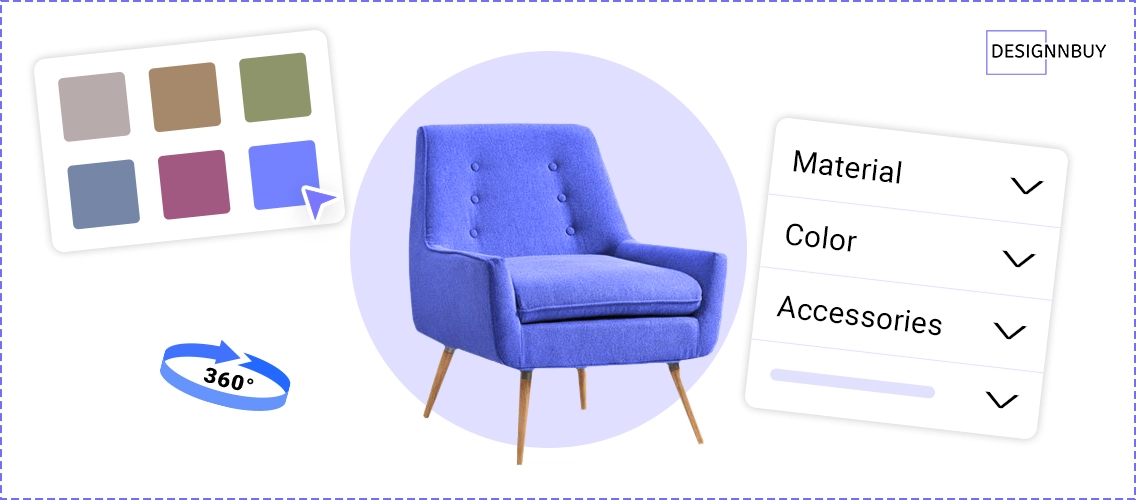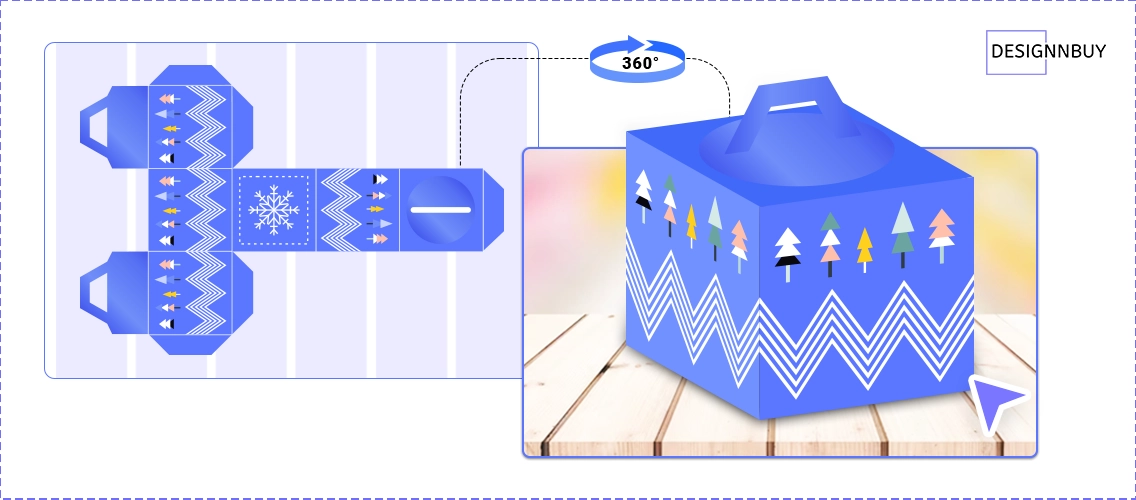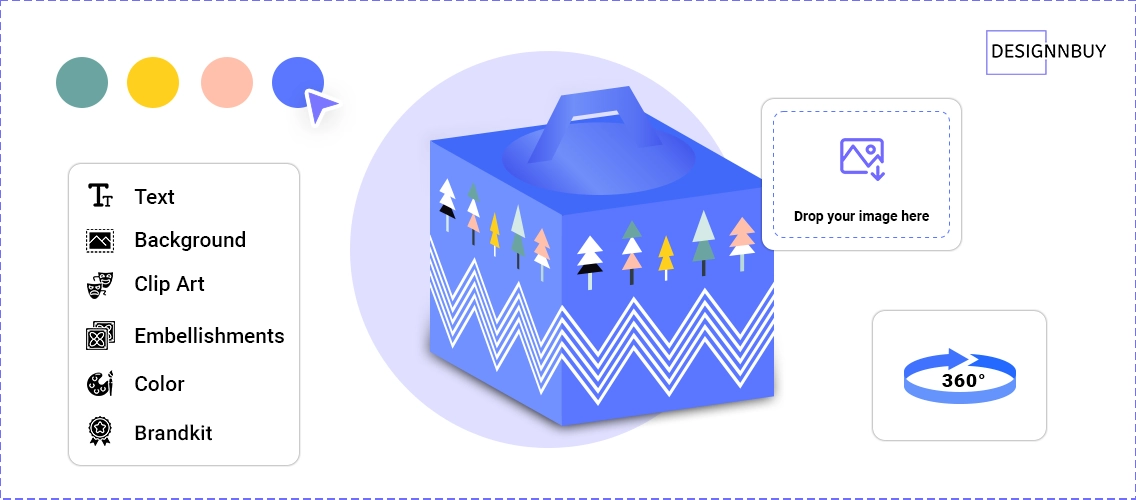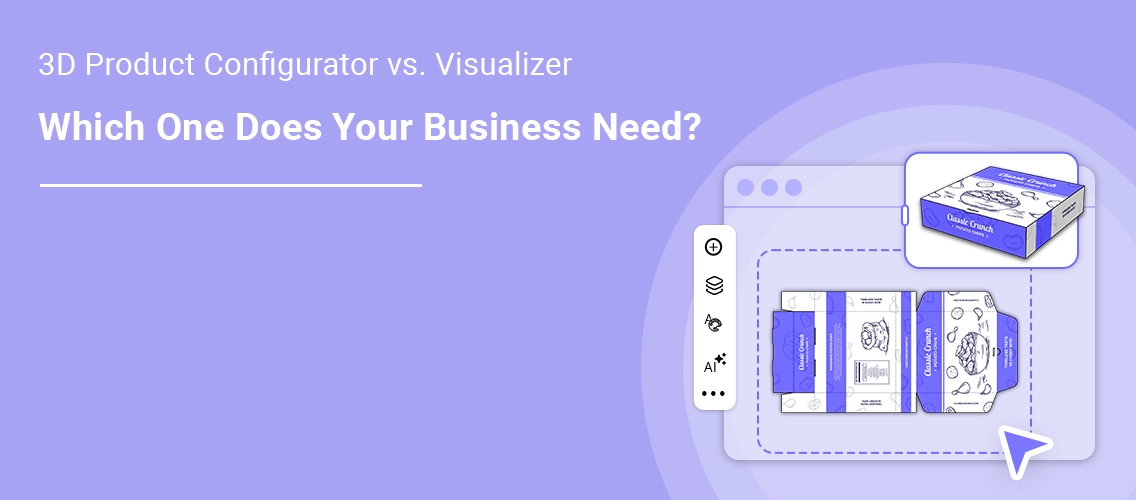Nike, IKEA, Tesla.
Recognized these names?
Alright, let’s throw in another one—Apple.
Now you see the pattern.
These brands don’t just sell products; they sell an experience. And a big part of that experience is visualization and customization.
Ever customized your own Nike shoes online? Or used IKEA’s AR tool to see how a couch would look in your living room?
That’s 3D technology at work. But here’s the catch, all companies aren’t using the same kind of 3D tool. You need to figure out which one does your print business need?
That’s exactly what we’ll break down today—the difference between a 3D product configurator and a 3D product visualizer, real-world case studies, and how choosing the right one can boost your sales.
Let’s dive in.
What’s a 3D Product Configurator?

A 3D product configurator takes customization a step further by letting customers build a product from scratch. Unlike a simple customizer or product visualizer, a product configurator allows users to add or remove components, change the structure, and see real-time updates in 3D.
This tool is commonly used in industries where customers require highly customized and functional products.
How It Works
- Choose a Base Model – Customers start with a standard template (e.g., a car, sofa, or shoe).
- Customize Components – They modify elements like shape, material, attachments, and features.
- View in Real-Time 3D – The product configurator updates the design instantly as changes are made.
- Finalize and Order – Once satisfied, customers place the order, and the configured product goes into production.
Real-Life Example
A luxury car brand uses a 3D product configurator to let buyers design their own vehicle. Customers can change the paint color, select different wheel styles, adjust the interior upholstery, and add custom features, all while seeing their changes applied in real time. This interactive experience enhances customer engagement and drives higher-value purchases.
Who Needs It?
A product configurator allows customers to build a product from scratch using different components and features. Unlike a customizer, which only changes surface details, a configurator lets users modify the product’s structure, size, and functionality.
- Automobile companies offering build-to-order cars.
- Furniture brands allowing customers to design modular pieces.
- Footwear and apparel brands offering custom shoes, jackets, and bags.
- Industrial manufacturers selling equipment with variable configurations.
Bottom line? A 3D product configurator makes it easy for your customers to build their perfect product, increasing order confidence and reducing back-and-forth edits.
Need In-depth Knowledge? Go through 
What About a 3D Product Visualizer?

A product visualizer is a tool that allows customers to personalize pre-designed products to suit their preferences. It enables users to modify aspects such as color, size, texture, material, and text without altering the product’s core structure. Often integrated into e-commerce websites, a product customizer or a visualiser may feature a 360-degree preview, allowing customers to see their changes in real time before purchasing.
The key advantage? Personalization. Customers feel more connected to a product they had a hand in designing, leading to higher satisfaction and brand loyalty.
How It Works
- Choose a Product – Customers start by selecting a base product, such as a packaging, pouches, stickers, labels, T-shirt, mug, or phone case.
- Customize the Design – They can change colors, upload images, add text, or select from predefined design elements.
- Preview in 3D – A live 360-degree preview helps them see how the final product will look.
- Place the Order – Once satisfied, customers complete the purchase, and the customized product is sent for production.
Real-Life Example
A business owner wants to order custom packaging for their brand. They upload their logo, change the box color, and add a tagline. The 3D visualizer shows a live preview of the final design before they place the order.
Who Needs It?
A 3D visualizer is best for print businesses that sell pre-designed or upload-based products where customers don’t need extensive structural changes but need 2D customization with just a realistic preview.
It’s great for:
- Packaging printers – Custom boxes, labels, and mailers.
- Apparel print providers – T-shirts, hoodies, and merchandise.
- Stationery printers – Business cards, brochures, and invitations.
- Signage and wide-format printers – Banners, posters, and vehicle wraps.
- Sticker and label printers – Kiss-cut, die-cut, and roll labels.
- Book and magazine printers – 3D previews of book covers and layouts.
- Promotional product printers – Mugs, phone cases, and tote bags.
- Photo printing businesses – Canvas prints, framed photos, and albums.
By giving your customers a crystal-clear preview of the final print, a 3D visualizer eliminates doubts and increases order completion rates.
3D Configurator vs. 3D Visualizer: What’s the Difference?
To help you determine which tool aligns better with your print business needs, here’s a comparison based on key factors:
| Features | 3D Product Configurator | 3D Product Visualizer |
|---|---|---|
| Configure, Price and Quoting | Allows Customers to Configure products and see real-time pricing updates based on their selections, streamlining and Quoting Process | Primarily focuses on product visualization with 2D customization; It has live pricing and typically requires separate quoting processes. |
| Interactivity | Highly interactive; users can modify various product attributes and see immediate visual feedback, enhancing engagement. | Offers3D interactivity in terms of viewing angles and zooming but lacks customization capabilities in 3D. |
| Visualization | Provides dynamic 3D visualization that updates with each customization, offering a comprehensive view of the personalized product. | Delivers static 3D visualization, allowing users to explore the product from different angles without altering its features. |
| Customization Depth | Supports deep customization, enabling changes to multiple product aspects such as color, material, text, and graphics. | Limited to viewing the product as-is; does not support user-driven customization. |
| Product Complexity | Well-suited for complex products with numerous customizable features, providing a clear and detailed representation of each variation. | Ideal for showcasing complex products to help customers understand their structure and design, even without customization options. |
| Scalability | Scalability depends on the complexity of products and the configurator's design; it may require significant resources to manage a wide range of customizable options. | Generally, more scalable as it involves displaying predefined 3D models without the need for extensive customization logic. |
| Performance | May experience longer loading times due to the need to render multiple customization options in real-time; performance can be optimized with efficient design and technology choices. | Typically offers faster loading times since it deals with static models; performance is generally more consistent and less resource intensive. |
| Technical Requirements | Requires advanced technical infrastructure to handle real-time rendering and user interactions; may need integration with pricing and inventory systems for accurate configuration and quoting. | Less demanding technical requirements focused on rendering static 3D models; easier to implement and maintain with lower computational overhead. |
3D Product Configurator or 3D Product Visualizer: What’s Best for Your Online Print Store?
Choosing between a 3D product configurator and a 3D product visualizer depends on several factors:
- Industry Fit: If your products benefit from customer personalization, such as apparel or promotional items, a 3D configurator is advantageous. For products where understanding the physical form is essential, like packaging, a 3D visualizer may suffice.
- Budget Constraints: Configurators are typically more complex and may require a higher investment compared to visualizers. Assess your budget to determine which tool offers the best return on investment.
- Device Compatibility: Ensure that the tool you choose is compatible with the devices and browsers commonly used by your target audience. Configurators may have higher technical requirements, potentially limiting accessibility for some users.
- Loading Speed: Configurators, due to their interactive nature, may have longer loading times, which can affect user experience. Visualizers generally load faster, providing a smoother experience.
How to Decide? Ask Yourself These Questions:
At the end of the day, your customers want confidence in what they’re ordering. Whether they’re personalizing business cards, designing custom packaging, or printing stickers, they need to see exactly what they’re getting before hitting ‘Buy Now.’
- Do your customers want full customization?
If yes → You need a 3D product configurator. - Do your customers only need to preview their uploaded designs before printing?
If yes → A 3D visualizer is enough. - Could your business benefit from both?
Some print shops use both technologies together to offer a seamless customer experience.
Example?
A custom packaging printer might use a 3D configurator to let customers modify box sizes and materials. Then, they could use a 3D visualizer to show the final printed product with the customer’s uploaded artwork.
Explore Top 5 Product Cofigurator Software for online print shops blog to choose the best configurator software. Also,One click away to take your print business to next level!
Why Choose DesignNBuy for 3D Product Configurator?

Now that you know the power of 3D customization, it’s time to put it into action. DesignNBuy’s 3D product configurator software gives your customers a real-time, interactive experience letting them see, personalize, and buy with confidence.
Here’s why DesignNBuy stands out:
True-to-Life 3D Visualization – Customers can rotate, zoom, and interact with their designs, ensuring they see exactly what they’ll get before ordering.
Seamless eCommerce Integration – Works effortlessly with Shopify, Magento, WooCommerce, BigCommerce, and more.
Works with Any Product Type – From apparel and packaging to promotional items and signage, customize anything in 3D.
Live Pricing & Instant Previews – Customers see real-time price updates as they design, making the buying process smooth and transparent.
Preflight Checks for Error-Free Printing – Built-in validation ensures every design is print-ready, reducing rework and delays.
Scalable for Any Business Size – Whether you’re a small print shop or a global enterprise, our web to print solution grows with you.
So, what’s next?
It’s time to bring your print business to life with 3D. Give your customers the confidence to create, preview, and order without second-guessing.
Ready to make your print shop stand out? Let’s build a better, more interactive shopping experience today!
See the Future of Web-to-Print Today!
Book a Free Demo Today and Start your 14 Day Free Trial – Experience the best!
FAQ : 3D Product configurator VS 3D Product Visualizer
What is a product configurator?
A product configurator is an interactive tool that lets customers customize and personalize a product before purchasing. It allows them to select colors, materials, sizes, and other options in real time, ensuring they get exactly what they want.
What is product visualization?
Product visualization is the process of creating realistic digital representations of products, often in 2D or 3D, so customers can see what they look like before buying. It enhances the online shopping experience by reducing uncertainty and improving confidence in purchases.
What is the purpose of a 3D product configurator?
A 3D product configurator helps customers design, modify, and preview products in an interactive 3D environment. It gives a realistic, 360-degree view, allowing them to see their customizations in real-time, reducing order errors and boosting sales.
What does a configurator do?
A product configurator enables users to customize different aspects of a product—like shape, color, text, or graphics—and instantly see the changes. It simplifies the ordering process and ensures customers get exactly what they want without back-and-forth communication.
Can a 3D product visualizer support product customization?
Yes! A 3D product visualizer not only shows products in an interactive 3D view but also allows real-time customization. Customers can tweak designs, change elements, and see a live preview before finalizing their order, making the shopping experience more engaging and precise.




